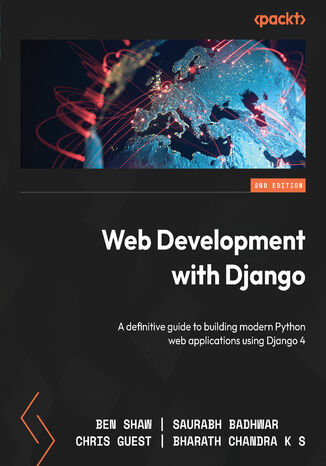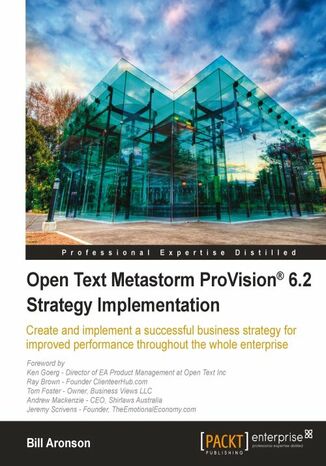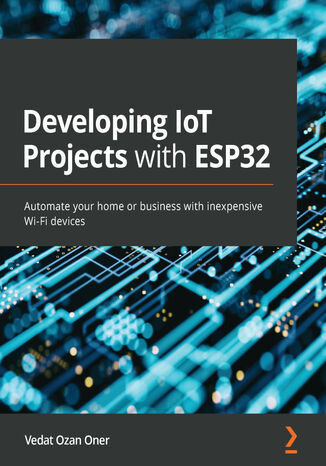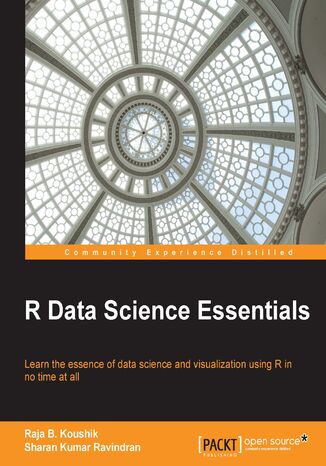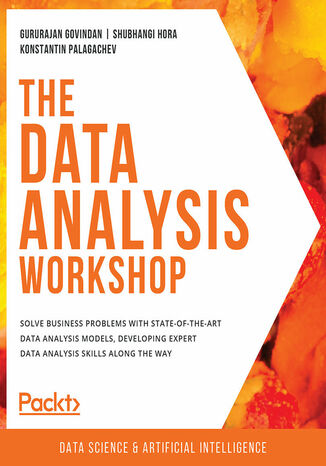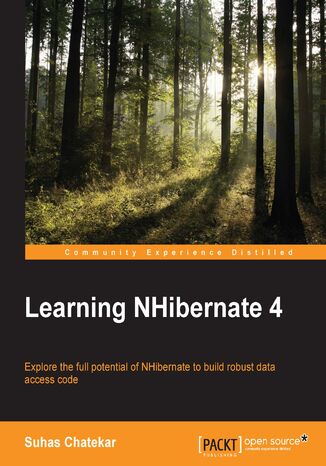Kategorie
-
- Bitcoin
- Bizneswoman
- Coaching
- Controlling
- E-biznes
- Ekonomia
- Finanse
- Giełda i inwestycje
- Kompetencje osobiste
- Komputer w biurze
- Komunikacja i negocjacje
- Mała firma
- Marketing
- Motywacja
- Multimedialne szkolenia
- Nieruchomości
- Perswazja i NLP
- Podatki
- Polityka społeczna
- Poradniki
- Prezentacje
- Przywództwo
- Public Relation
- Raporty, analizy
- Sekret
- Social Media
- Sprzedaż
- Start-up
- Twoja kariera
- Zarządzanie
- Zarządzanie projektami
- Zasoby ludzkie (HR)
-
- Architektura i wnętrza
- BHP
- Biznes i Ekonomia
- Dom i ogród
- E-Biznes
- Ekonomia i finanse
- Ezoteryka
- Finanse
- Finanse osobiste
- Firma
- Fotografia
- Informatyka
- Kadry i płace
- Kobieca
- Komputery, Excel
- Księgowość
- Kultura i literatura
- Naukowe i akademickie
- Ochrona środowiska
- Opiniotwórcze
- Oświata
- Podatki
- Podróże
- Psychologia
- Religia
- Rolnictwo
- Rynek książki i prasy
- Transport i Spedycja
- Zdrowie i uroda
-
- Aplikacje biurowe
- Bazy danych
- Bioinformatyka
- Biznes IT
- CAD/CAM
- Digital Lifestyle
- DTP
- Elektronika
- Fotografia cyfrowa
- Grafika komputerowa
- Gry
- Hacking
- Hardware
- IT w ekonomii
- Pakiety naukowe
- Podręczniki szkolne
- Podstawy komputera
- Programowanie
- Programowanie mobilne
- Serwery internetowe
- Sieci komputerowe
- Start-up
- Systemy operacyjne
- Sztuczna inteligencja
- Technologia dla dzieci
- Webmasterstwo
-
- Antologie
- Ballada
- Biografie i autobiografie
- Dla dorosłych
- Dramat
- Dzienniki, pamiętniki, listy
- Epos, epopeja
- Esej
- Fantastyka i science-fiction
- Felietony
- Fikcja
- Humor, satyra
- Inne
- Klasyczna
- Kryminał
- Literatura faktu
- Literatura piękna
- Mity i legendy
- Nobliści
- Nowele
- Obyczajowa
- Okultyzm i magia
- Opowiadania
- Pamiętniki
- Podróże
- Poemat
- Poezja
- Polityka
- Popularnonaukowa
- Powieść
- Powieść historyczna
- Proza
- Przygodowa
- Publicystyka
- Reportaż
- Romans i literatura obyczajowa
- Sensacja
- Thriller, Horror
- Wywiady i wspomnienia
-
- Archeologia
- Bibliotekoznawstwo
- Filmoznawstwo
- Filologia
- Filologia polska
- Filozofia
- Finanse i bankowość
- Geografia
- Gospodarka
- Handel. Gospodarka światowa
- Historia i archeologia
- Historia sztuki i architektury
- Kulturoznawstwo
- Lingwistyka
- Literaturoznawstwo
- Logistyka
- Matematyka
- Medycyna
- Nauki humanistyczne
- Pedagogika
- Pomoce naukowe
- Popularnonaukowa
- Pozostałe
- Psychologia
- Socjologia
- Teatrologia
- Teologia
- Teorie i nauki ekonomiczne
- Transport i spedycja
- Wychowanie fizyczne
- Zarządzanie i marketing
-
- BHP
- Historia
- Kodeks drogowy. Prawo jazdy
- Nauki prawne
- Ochrona zdrowia
- Ogólne, kompendium wiedzy
- Podręczniki akademickie
- Pozostałe
- Prawo budowlane i lokalowe
- Prawo cywilne
- Prawo finansowe
- Prawo gospodarcze
- Prawo gospodarcze i handlowe
- Prawo karne
- Prawo karne. Przestępstwa karne. Kryminologia
- Prawo międzynarodowe
- Prawo międzynarodowe i zagraniczne
- Prawo ochrony zdrowia
- Prawo oświatowe
- Prawo podatkowe
- Prawo pracy i ubezpieczeń społecznych
- Prawo publiczne, konstytucyjne i administracyjne
- Prawo rodzinne i opiekuńcze
- Prawo rolne
- Prawo socjalne, prawo pracy
- Prawo Unii Europejskiej
- Przemysł
- Rolne i ochrona środowiska
- Słowniki i encyklopedie
- Zamówienia publiczne
- Zarządzanie
-
- Afryka
- Albumy
- Ameryka Południowa
- Ameryka Środkowa i Północna
- Australia, Nowa Zelandia, Oceania
- Austria
- Azja
- Bałkany
- Bliski Wschód
- Bułgaria
- Chiny
- Chorwacja
- Czechy
- Dania
- Egipt
- Estonia
- Europa
- Francja
- Góry
- Grecja
- Hiszpania
- Holandia
- Islandia
- Litwa
- Łotwa
- Mapy, Plany miast, Atlasy
- Miniprzewodniki
- Niemcy
- Norwegia
- Podróże aktywne
- Polska
- Portugalia
- Pozostałe
- Przewodniki po hotelach i restauracjach
- Rosja
- Rumunia
- Słowacja
- Słowenia
- Szwajcaria
- Szwecja
- Świat
- Turcja
- Ukraina
- Węgry
- Wielka Brytania
- Włochy
-
- Filozofie życiowe
- Kompetencje psychospołeczne
- Komunikacja międzyludzka
- Mindfulness
- Ogólne
- Perswazja i NLP
- Psychologia akademicka
- Psychologia duszy i umysłu
- Psychologia pracy
- Relacje i związki
- Rodzicielstwo i psychologia dziecka
- Rozwiązywanie problemów
- Rozwój intelektualny
- Sekret
- Seksualność
- Uwodzenie
- Wygląd i wizerunek
- Życiowe filozofie
-
- Bitcoin
- Bizneswoman
- Coaching
- Controlling
- E-biznes
- Ekonomia
- Finanse
- Giełda i inwestycje
- Kompetencje osobiste
- Komunikacja i negocjacje
- Mała firma
- Marketing
- Motywacja
- Nieruchomości
- Perswazja i NLP
- Podatki
- Polityka społeczna
- Poradniki
- Prezentacje
- Przywództwo
- Public Relation
- Sekret
- Social Media
- Sprzedaż
- Start-up
- Twoja kariera
- Zarządzanie
- Zarządzanie projektami
- Zasoby ludzkie (HR)
-
- Antologie
- Ballada
- Biografie i autobiografie
- Dla dorosłych
- Dramat
- Dzienniki, pamiętniki, listy
- Epos, epopeja
- Esej
- Fantastyka i science-fiction
- Felietony
- Fikcja
- Humor, satyra
- Inne
- Klasyczna
- Kryminał
- Literatura faktu
- Literatura piękna
- Mity i legendy
- Nobliści
- Nowele
- Obyczajowa
- Okultyzm i magia
- Opowiadania
- Pamiętniki
- Podróże
- Poezja
- Polityka
- Popularnonaukowa
- Powieść
- Powieść historyczna
- Proza
- Przygodowa
- Publicystyka
- Reportaż
- Romans i literatura obyczajowa
- Sensacja
- Thriller, Horror
- Wywiady i wspomnienia
-
- Filozofie życiowe
- Komunikacja międzyludzka
- Mindfulness
- Ogólne
- Perswazja i NLP
- Psychologia akademicka
- Psychologia duszy i umysłu
- Psychologia pracy
- Relacje i związki
- Rodzicielstwo i psychologia dziecka
- Rozwiązywanie problemów
- Rozwój intelektualny
- Sekret
- Seksualność
- Uwodzenie
- Wygląd i wizerunek
- Życiowe filozofie
Cloud technologies have made building a defense-in-depth security strategy of paramount importance. Without proper planning and discipline in deploying the security posture across Microsoft 365 and Azure, you are compromising your infrastructure and data. Microsoft Security, Compliance, and Identity Fundamentals is a comprehensive guide that covers all of the exam objectives for the SC-900 exam while walking you through the core security services available for Microsoft 365 and Azure.This book starts by simplifying the concepts of security, compliance, and identity before helping you get to grips with Azure Active Directory, covering the capabilities of Microsoft’s identity and access management (IAM) solutions. You'll then advance to compliance center, information protection, and governance in Microsoft 365. You'll find out all you need to know about the services available within Azure and Microsoft 365 for building a defense-in-depth security posture, and finally become familiar with Microsoft's compliance monitoring capabilities.By the end of the book, you'll have gained the knowledge you need to take the SC-900 certification exam and implement solutions in real-life scenarios.
Introduction to Algorithms. A Comprehensive Guide for Beginners: Unlocking Computational Thinking
Begin your journey into the fascinating world of algorithms with this comprehensive course. Starting with an introduction to the basics, you will learn about pseudocode and flowcharts, the fundamental tools for representing algorithms. As you progress, you'll delve into the efficiency of algorithms, understanding how to evaluate and optimize them for better performance. The course will also cover various basic algorithm types, providing a solid foundation for further exploration.You will explore specific categories of algorithms, including search and sort algorithms, which are crucial for managing and retrieving data efficiently. You will also learn about graph algorithms, which are essential for solving problems related to networks and relationships. Additionally, the course will introduce you to the data structures commonly used in algorithms.Towards the end, the focus shifts to algorithm design techniques and their real-world applications. You will discover various strategies for creating efficient and effective algorithms and see how these techniques are applied in real-world scenarios. By the end of the course, you will have a thorough understanding of algorithmic principles and be equipped with the skills to apply them in your technical career.
Ben Shaw, Saurabh Badhwar, Chris Guest, Bharath Chandra K S
Do you want to develop reliable and secure applications that stand out from the crowd without spending hours on boilerplate code? You’ve made the right choice trusting the Django framework, and this book will tell you why. Often referred to as a “batteries included” web development framework, Django comes with all the core features needed to build a standalone application. Web Development with Django will take you through all the essential concepts and help you explore its power to build real-world applications using Python.Throughout the book, you’ll get the grips with the major features of Django by building a website called Bookr – a repository for book reviews. This end-to-end case study is split into a series of bitesize projects presented as exercises and activities, allowing you to challenge yourself in an enjoyable and attainable way. As you advance, you'll acquire various practical skills, including how to serve static files to add CSS, JavaScript, and images to your application, how to implement forms to accept user input, and how to manage sessions to ensure a reliable user experience. You’ll cover everyday tasks that are part of the development cycle of a real-world web application.By the end of this Django book, you'll have the skills and confidence to creatively develop and deploy your own projects.
Open Text ProVision® (formerly known as Metastorm ProVision®) is an Enterprise Architecture (EA) solution allowing for effective planning and decision making throughout the enterprise. It enables an organization to have a central repository of information about the business, reducing organizational risks and better optimizing business resources.Implemented well, it enables better and more actionable decisions exactly when you need them.This book combines theory and practice to provide a step- by- step guide to building a successful customer- centric model of your business. The approach is simple and down to earth, and along the way, with various real-world examples, you will learn how to make a business case, use a framework, and adopt a methodology with Open Text ProVision®. This book draws on the experience of ProVision® experts around the world. By combining theory with practice from the field you can avoid common mistakes and develop a successful customer centric strategy for implementing ProVision®. Each chapter builds on the previous one to give you the confidence to implement a central repository, dealing with both the technical and human issues that you might face.
Developing IoT Projects with ESP32. Automate your home or business with inexpensive Wi-Fi devices
Developing IoT Projects with ESP32 provides end-to-end coverage of secure data communication techniques from sensors to cloud platforms that will help you to develop production-grade IoT solutions by using the ESP32 SoC. You'll learn how to employ ESP32 in your IoT projects by interfacing with different sensors and actuators using different types of serial protocols.This book will show you how some projects require immediate output for end-users, and cover different display technologies as well as examples of driving different types of displays. The book features a dedicated chapter on cybersecurity packed with hands-on examples. As you progress, you'll get to grips with BLE technologies and BLE mesh networking and work on a complete smart home project where all nodes communicate over a BLE mesh. Later chapters will show you how IoT requires cloud connectivity most of the time and remote access to smart devices. You'll also see how cloud platforms and third-party integrations enable endless possibilities for your end-users, such as insights with big data analytics and predictive maintenance to minimize costs.By the end of this book, you'll have developed the skills you need to start using ESP32 in your next wireless IoT project and meet the project's requirements by building effective, efficient, and secure solutions.
R Data Science Essentials. R Data Science Essentials
Raja B. Koushik, Sharan Kumar Ravindran
With organizations increasingly embedding data science across their enterprise and with management becoming more data-driven it is an urgent requirement for analysts and managers to understand the key concept of data science. The data science concepts discussed in this book will help you make key decisions and solve the complex problems you will inevitably face in this new world. R Data Science Essentials will introduce you to various important concepts in the field of data science using R. We start by reading data from multiple sources, then move on to processing the data, extracting hidden patterns, building predictive and forecasting models, building a recommendation engine, and communicating to the user through stunning visualizations and dashboards.By the end of this book, you will have an understanding of some very important techniques in data science, be able to implement them using R, understand and interpret the outcomes, and know how they helps businesses make a decision.
Gururajan Govindan, Shubhangi Hora, Konstantin Palagachev
Businesses today operate online and generate data almost continuously. While not all data in its raw form may seem useful, if processed and analyzed correctly, it can provide you with valuable hidden insights. The Data Analysis Workshop will help you learn how to discover these hidden patterns in your data, to analyze them, and leverage the results to help transform your business.The book begins by taking you through the use case of a bike rental shop. You'll be shown how to correlate data, plot histograms, and analyze temporal features. As you progress, you’ll learn how to plot data for a hydraulic system using the Seaborn and Matplotlib libraries, and explore a variety of use cases that show you how to join and merge databases, prepare data for analysis, and handle imbalanced data.By the end of the book, you'll have learned different data analysis techniques, including hypothesis testing, correlation, and null-value imputation, and will have become a confident data analyst.



